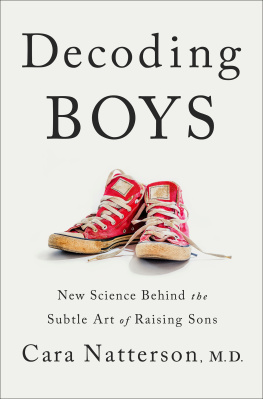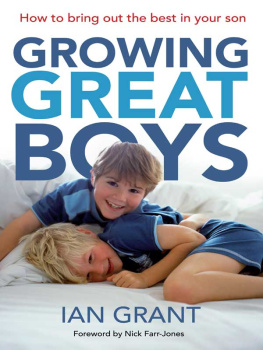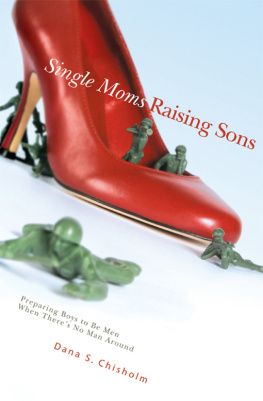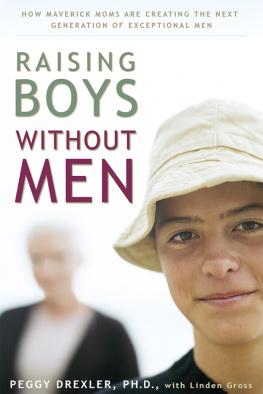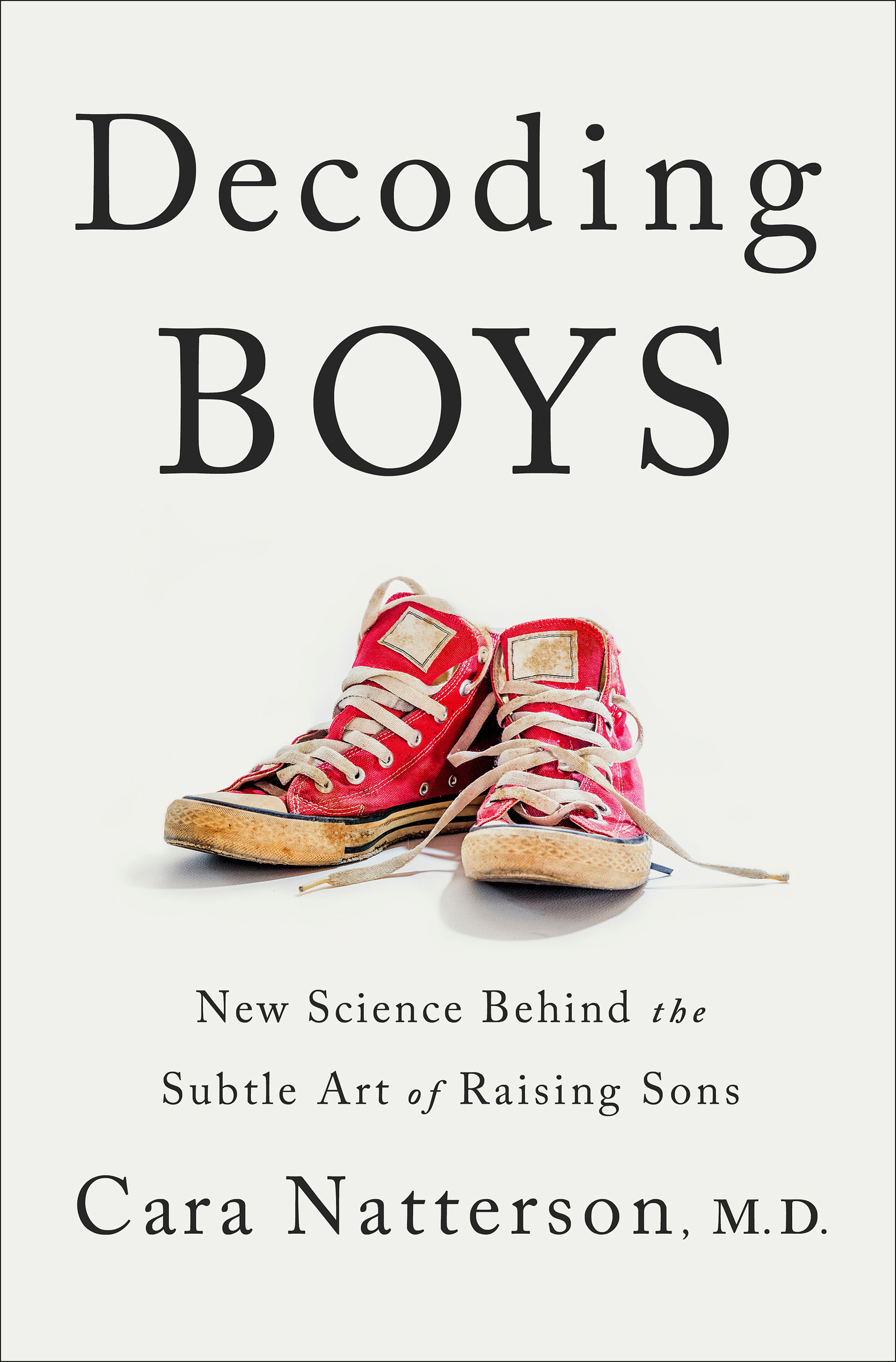All rights reserved.
Published in the United States by Ballantine Books, an imprint of Random House, a division of Penguin Random House LLC, New York.
B ALLANTINE and the H OUSE colophon are registered trademarks of Penguin Random House LLC.
Names: Natterson, Cara Familian, author.
Title: Decoding boys: new science behind the subtle art of raising sons / Cara Natterson, MD.
Description: First Edition. | New York: Ballantine Books, 2020. | Includes bibliographical references and index.
Identifiers: LCCN 2019037589 (print) | LCCN 2019037590 (ebook) | ISBN 9781984819031 (hardcover) | ISBN 9781984819048 (ebook)
Subjects: LCSH: BoysPsychology. | Teenage boysPsychology. | Childrearing. | Parent and child.
Classification: LCC BF724.2.N38 2020 (print) | LCC BF724.2 (ebook) | DDC649/.1251dc23
Introduction
DECODE: to convert (a coded message) into intelligible language; to discover the underlying meaning of; to understand what the heck is going on here.
Pubertys jumble of feelings and behaviors, not to mention physical transformations, can be downright confusing to its recipient adolescents and bystanding parents alike. Thats nothing new. But over the past couple of decades, girls have tackled puberty head-on, mainstreaming conversations about body parts and completely destigmatizing their biological and emotional metamorphoses. All the while, boys sat quietly on the sidelines.
The net result is that girls own puberty. Not all of them, but many. They talk about body changes, emotional swings, friendships, and family dynamics; they use words that used to be R-rated (vagina!periods!) freely. When they start to show signs of entering womanhood, the world now hands them a microphone so they can talk and talk and talk.
But not boys. They tend to slink into this stage of life surreptitiously, helped by the fact that their bodies generally dont announce the massive shifts withinthere are no zits or bulging musclesuntil years later. And they get quiet, or at least quieter, than they used to be. Many parents take their sons newfound silence as a clear indicator that they dont want to talk, and in an effort to respect this shift, or maybe just to keep the parent-son relationship on solid footing because its what sons seem to want, we say okay and stop attempting to engage them. Bye-bye, deep conversations about most things puberty-related. The shift is subtle at first, but by the time our boys voices crack and hair sprouts in their armpits, many parents know very little about our sons lives, and have often lost the ability to ask. The upshot is that we actively leave boys out of the very same conversations we pull girls into.
Even if you communicate with your son, the world in general doesnt. Sure, our boys are warned about the bad things that can happen to them if they engage in certain behaviors (usually related to sex, drugs, or a baseline level of stupidity), but they dont get a fraction of what the girls get. Beyond basic management of hair and stink and growing testicles, no one talks to them about the paradoxes of this stage of life, like the fact that they often just want to go quiet, but can also have rage; they have deep thoughts but are also impulsive; they grow and develop later than girls (at least many of them), but are steeped in a culture of violence and sex at increasingly young ages. All of this is confusing, to say the least, made more so with our relative parental silence. But the real consequence is to arrive in adulthood unprepared for much of what is expected of them.
If only our boys could experience what our girls do: endless streams of content in every direction covering not just whats happening to their bodies and brains but also the precipitators and upshots of their behaviors, including (but certainly not limited to) sex and drugs and violence. Maybe, just maybe, our boys would then enter the world as young adults armed with more knowledge, which in turn could protect them from dire consequences. And eventually, as they grow older, they would pay it forward, decades from now parenting their own children with more open dialogue, evolving into a generation of future fathers who take on these same conversations with their kids comfortably and eagerly. If only, right?
I say they can. Its just up to us, todays parents, to move the dial. And that means starting conversations.
If this book were two sentences long, here would be the text in its entirety: Despite what they say (Im fine; cue closing door) and despite social convention (if he doesnt want to talk about it, leave well enough alone; Hes fine), not talking to your son about his evolving physical, emotional, and social self is the biggest parent trap of them all. Because if you dont have the conversations, someone else will: a friend whos got it all wrong, or a family member who doesnt exactly share your ideology, or the Internet with its endless treasure trove of image-based content, presenting still pictures and videos that, once viewed, your son can never un-see.
I come to this particular subject matterand my mild fixation on making right the wrong we inadvertently do to our boysin a thoroughly roundabout way. Back in 2011, I had just signed on with the juggernaut toy company American Girl to update their cult-classic puberty book The Care and Keeping of You. That same year, the book itself had just become a teenager, marking thirteen years and three million copies in print. It should go without saying that the book was written for girls. For claritys sake, I did not write the original book, though I wish I had: every pediatrician I knew told every parent of a tween girl to go out and buy it, because its cartoony innocence and straightforward, girl-friendly tone made for the best basic health primer available. By speaking to younger girls before they even began their journey to womanhood, The Care and Keeping of You filled a void left by the go-to body book that preceded it, Our Bodies, Ourselves, which was a lot of thingspart feminist manifesto, part biological encyclopedia, and part doorstop (all 647 pages printed on 8.5" x 11" paper and weighing in at what felt like ten pounds)but it wasnt meant for young girls with very basic questions.
In 2011, I got to work updating the original Care and Keeping of You and creating a follow-up book for older girls creatively titled The Care and Keeping of You 2. But at the same time, I also became super vocal about a boy book. In fact, from day one with American Girl, I pitched The Care and Keeping for boys (nicknamed by one of my closest friends The Care and Keeping of Dudes). Even during the process of being vetted for a dream job to update and expand a wildly best-selling book published by a company that

